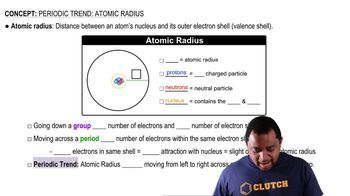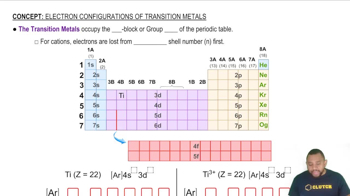Textbook Question
Titanium, used to make jet aircraft engines, is much harder than potassium or calcium. Explain.
 Verified step by step guidance
Verified step by step guidance



Titanium, used to make jet aircraft engines, is much harder than potassium or calcium. Explain.
Molybdenum (mp 2623 °C) has a higher melting point than yttrium (mp 1522 °C) or cadmium (mp 321 °C). Explain.
Briefly account for each of the following observations:
(a) Atomic radii decrease in the order Sc > Ti > V.
(b) Densities increase in the order Ti > V > Cr.
What is the lanthanide contraction, and why does it occur?
The atomic radii of zirconium (160 pm) and hafnium (159 pm) are nearly identical. Explain.